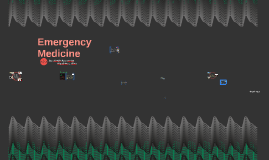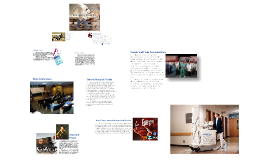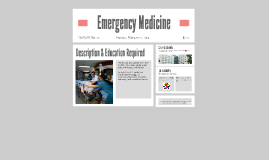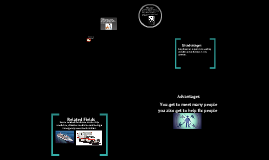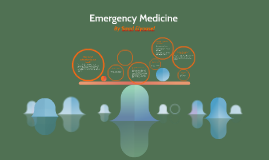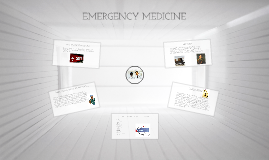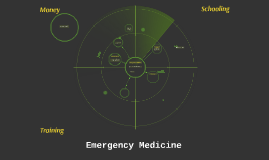Emergency Medicine
Transcript: Emergency Medicine Major Conferences • Emergencies in Medicine Conference • Emergency Medicine 2012: 35th Annual Winter Conference • At these conferences, many different areas of emergency medicine are addressed. Such as Pediatric emergencies, cardiac emergencies, radiology. • There are also smaller conferences for those specialty areas as well. For example, the John M. Templeton Jr. Pediatric Trauma symposium or Basic Emergency Medicine Ultrasound meeting •American Academy of Emergency Medicine (AAEM) – restricts membership to only board certified specialists in EM. It promotes the independence of emergency physicians and seeks to limit the interference of corporations and other outside groups in the doctor-patient relationship. •American College of Emergency Physicians (ACEP) – oldest and largest professional organization, founded in 1968 •Those are the two major governing bodies of EM. They both have codes of ethics and guidelines the physicians must follow. They essentially must follow the AMA’s code of ethics as well as a few other modifications due to the surprise nature of the job. Other Trends, Issues and Conventional Practices • Triage: this topic has been the subject of much research lately. The studies are trying to find if the agreement between nurses and physicians is the same for patients. This is to determine whether they are urgent or nonurgent care. This can be a good thing to help patients that have more threatening issues be cared for first. However a simple answering of questions doesn’t always assess the problem correctly. • There is always ongoing research to improve the speed at which emergency patients are given care. The research for quicker treatment of a patient is always being looked at. • Another trend among universities that have Emergency Medicine departments is the ability to prepare for a pandemic of biological weaponry of terrorists. Emergency medicine is a medical specialty in which physicians care for patients with acute illnesses or injuries which require immediate medical attention. While not usually providing long-term or continuing care, emergency medicine physicians diagnose a variety of illnesses and undertake acute interventions to stabilize the patient. Funding Agencies Common knowledge among Emergency room physicians would be the use of penicillin, CPR, and the ability to apply stitches. One of the major discoveries for emergency rooms was the discovery of penicillin. Any ground-breaking discovery in medicine in general would benefit emergency medicine. Technological advanaces also help in the ER. Portable devices for x-ray have helped to treat the patient without having to transfer them back and forth. The ability to treat patients quicker is one of the goals of emergency departments. Current Research Trends Popular and Trade Communication • As I conducted research, I didn’t come across anything unusual that people in my field do. However, I find it particularly fascinating the ability of people in emergency medicine to think so quickly. Their ability to quickly diagnose and treat with such care and accuracy is amazing. Also, the amount of subspecialites in this field is endless. A few of the subspecialities are pediatrics, toxicology, wilderness medicine, sports medicine, and underseas and hyperbaric medicine. • Dominique-Jean Larrey was the first man to develop the ambulance. The ambulance is a key factor in emergency medicine. In 1792, after seeing many soldiers die while waiting for care, Larrey developed the “flying ambulance.” This was a horse drawn carriage only for the transport of wounded people. Larrey also developed the concept of triage at this time. • John Mills Jr., M.D. – Mills became the first full time emergency doctors in 1961. He and three other physicians left their practices to become full time ER staff. This was known as the Alexandria Plan. Landmark Discoveries • Most people get their sense of Emergency medicine from television. With shows like ER and Untold Stories of the ER. Most of these shows present extreme cases that may come into an emergency department. It gives a distorted view of emergency medicine. While there can be extreme emergency cases, like the ones on TV, many are small problems such a cuts that need stitches or allergic reactions that need a shot. • As for other media, there is Emergency Medicine Magazine. It contains articles, editorials, and quizzes. Also, there are many blogs out there by Emergency Department physicians and nurses themselves Scholarly Journals • Medicare, Medicaid, Private insurance, taxpayers • Funding or payment for Emergency rooms in particular is tricky because of the Emergency Medical Treatment and Active Labor Act. This act requires all emergency facilities to treat patients whether they have the ability to pay or not. This causes hospitals to have to write off people who can’t pay as charity or bad debt for tax purposes. The increased frequency of which this is happening is causing ER’s to






